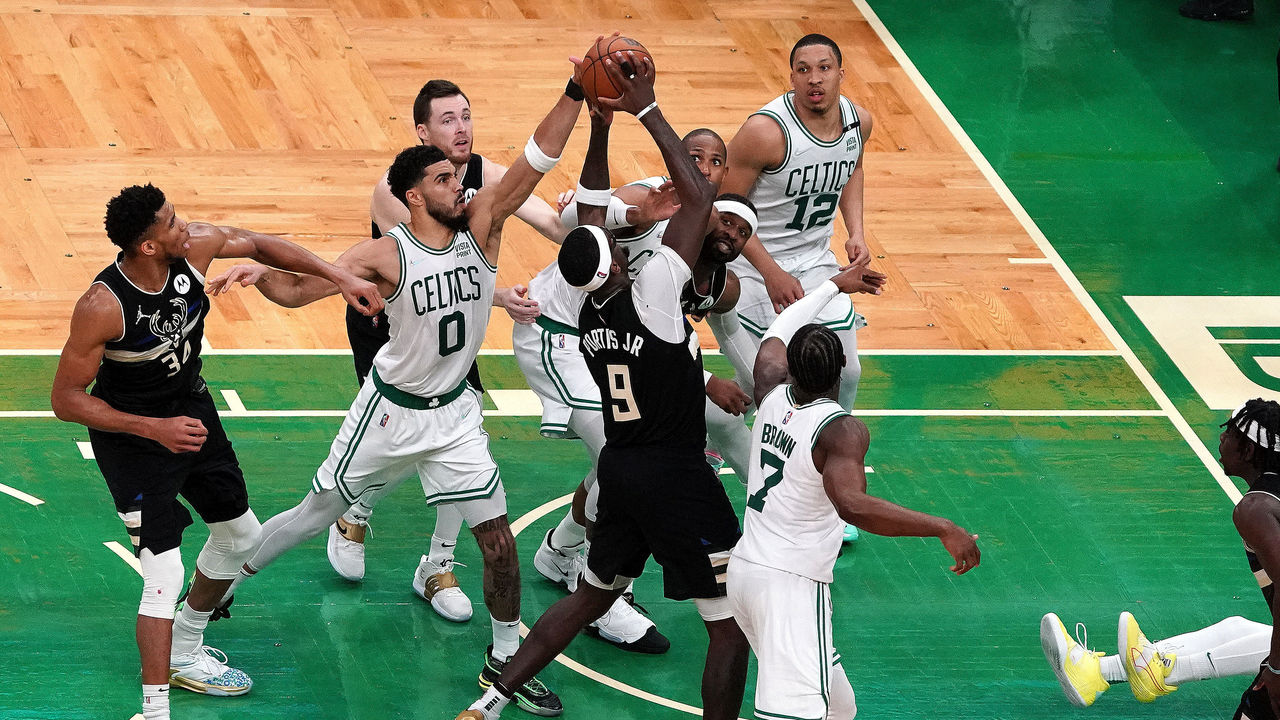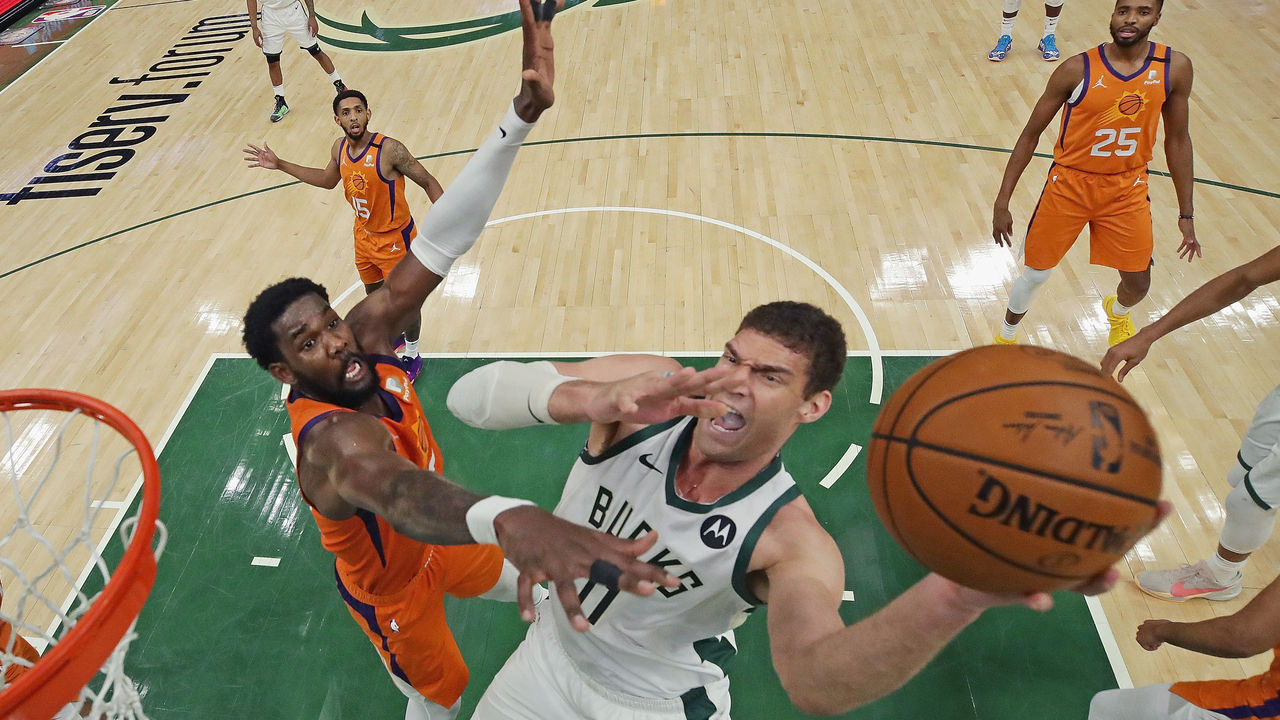Trends to watch in 2023: Why offensive rebounding is back in style
Now that it's 2023, we’re looking at some stylistic trends that are starting to take hold in the NBA, which could define the league in the calendar year to come. First up: offensive rebounding.
It's no secret the NBA's offensive environment is completely bananas right now. There are a thousand plausible explanations for that, but here's a very simple one: teams around the league are not only hitting an extremely high percentage of their shots, they're also making a more concerted effort to recover the shots they miss.
The league's median offensive rebound rate of 26.8% is higher than it's been in eight years, according to Cleaning the Glass. There are nine teams rebounding at least 29% of their own misses this season, compared to only three such teams last year. In the two seasons before that, there were none.
It's not that the offensive rebound rates we're seeing this season are unprecedented; they're actually quite a bit lower than rates around the turn of the millennium and even the early 2010s. But several factors conspired to steadily drive down second-chance creation in the years since, and we're only now starting to see those numbers, ahem, rebound.
One factor is that the game started to spread out, with more and more players decamping for the 3-point line. Having fewer players stationed close to the basket typically means fewer opportunities to recover balls that bounce off the rim, especially with big men increasingly being used as floor-spacers. More 3-pointers also means more long rebounds, but there's not much evidence to support the notion that longer rebounds (apart from the rare ones that carom all the way back to the arc) are likelier to be recovered by the offensive team.
Another factor is that the game started to speed up. As offenses began to place more emphasis on getting out in transition - where points are easier to come by than they are in the half court - defenses had to prioritize getting back and establishing their shell, which meant sending fewer guys hurtling toward the offensive glass.
One more minor disincentive arrived in 2018, when the league shrunk the allotted time for shot-clock resets following offensive boards from 24 seconds down to 14. That's still plenty of time to generate a good shot when you're restarting a possession in the other team's end, it's just not as valuable from a clock-controlling perspective as getting a fresh 24 was.
So, the reasons for offensive rebounding's decline all made sense, but the league arguably overcorrected to the point that it became something of a tactical blind spot. For all the perceived downsides of crashing and whiffing, there was still immense value in generating not only extra shots but additional efficient shots. This season, for example, the average first-shot half-court possession produces 0.97 points, while the average possession following an offensive rebound produces 1.13, per Cleaning the Glass.

There's a bit of selection bias in those numbers - many second shots are easy putbacks off "Kobe assists" and tap-ins from players following their own missed bunnies - but those plays are more fruitful on balance because the defense is usually some combination of scrambled, cross-matched, tired, and demoralized.
Any way you slice it, giving yourself more opportunities to score is a good thing, even if you have to sacrifice something in the pursuit. Especially because retaining control of the ball for longer has the added benefit of keeping it out of the hands of your opponent, a boon to your defense. That's why, despite all the apparent disincentives, attitudes toward offensive rebounding have veered back in the opposite direction, with teams now crashing the glass more aggressively than they have in nearly a decade.
That's been a sneakily huge part of the Grizzlies' success the last two years, as they've used Steven Adams' offensive rebounding prowess to offset a first-shot half-court offense that's ranked no better than 22nd. The Raptors are even more scoring-challenged in the half court, and they too got out ahead of this trend last season. They used their lack of shooting as a way to leverage their length and athleticism around the basket, creating a massive shooting-possession edge in the process. One of the challenges they've faced this season is trying to retain that edge while the rest of the league catches up.
"Part of what we decided to do a couple years ago was really try to max out possessions, and understanding that we might have a decent quantity of offensive rebound opportunities, we needed to try and get some of those," Toronto head coach Nick Nurse told theScore. "And that was giving us a huge total shot advantage, which is obviously a big deal in the game. And (this season has) kind of shrunk that number down a bit, and that just leaves a little less room for error."
Where the Raptors' strategy was deployed in part to overcome offensive limitations and capitalize on their many missed shots, plenty of great offensive teams have also come around to see the value of additional possessions. If anything, having more offensive talent can compound the value of extra shots, because you'll be that much more likely to convert those shots into points.
The Suns ranked in the bottom 10 in offensive rebound rate for the first three years of Monty Williams' coaching tenure, but have rocketed up to fourth this season. And while injuries have pulled their record down, their work on the glass has helped keep them in the top seven in offensive efficiency. Williams was philosophically opposed to the notion of crashing the offensive boards, but assistant coach Kevin Young finally managed to convince him that the benefits outweighed the costs.
"Kevin Young pushed me to get outside my box. I was always a transition defense guy - get back three, sometimes four guys," Williams said. "But the more you look at the NBA, you (realize) the team that gets the most possessions increases their chances of winning. So, he's the one that talked me into it, basically dragged me out of the candy store screaming and yelling like a little child."

Mike Budenholzer's Bucks have leveraged their size on the defensive end since he took over there, but it wasn't until recently that they started taking full advantage of it at the offensive end. Their sixth-ranked offensive rebound rate this season is by far the highest it's been during his tenure, and has been steadily climbing since they ranked 28th in 2019-20.
Making more frequent use of the dunker spot the following season helped in that regard, and the Bucks largely managed to do so without totally compromising their spacing. They destroyed Williams' Suns on the glass in the 2021 Finals, which helped Budenholzer realize that pushing hard for offensive boards could be a viable big-picture strategy (though he acknowledges that he, too, needed a push from some members of his staff).
"Just a slow, gradual move toward that direction. A couple assistant coaches pushing for it and giving analytics or kind of visual (proof)," Budenholzer said. "And then, you know, we're big. So, could we do both? Could we have great spacing and still work the offensive glass more than we had in the past? And in the playoffs a couple years ago it was really big for us, it helped us a ton. So, if there was a moment, that might have been it."
As for the long-held conventional wisdom about sacrificing transition defense in the bargain, Williams feels those concerns have largely proven unfounded.
"We haven't seen it hurt us like I thought it would," he said. "As a matter of fact, we feel like at times it helps us. When teams know you're sending two or three guys, sometimes four, they’re less apt to run. That’s what they do in Toronto, where they send like eight guys. They check a few guys in the game illegally to go get a board sometimes. You see so many red jerseys in the paint."
Cleaning the Glass tracks "points added per possession" on transition plays following live-ball rebounds, which essentially quantifies how many more points a team scores or allows via those possessions than they would've been expected to if those had been half-court possessions instead. The Suns have been below average when it comes to defending those plays, but the drop-off from the last two seasons - when they were largely content to punt the offensive glass - has been pretty negligible. In fact, Williams' broader point that crashing the offensive glass can actually be a deterrent to opponents looking to get out and run isn't entirely off base.
Last season's Raptors were indeed one of the best teams in the league at limiting transition chances, and while they've been less effective in that capacity this season, they still aren't exactly getting burned for their crash-happy ways. The Bucks are currently achieving the same balance the Raptors did last season, and the Grizzlies have done it for two years running. If you look at the league as a whole, you see basically zero correlation between grabbing offensive rebounds and surrendering transition points after failing to come up with one:
That's not to say there isn't a threshold for crashing, beyond which the balance would get tilted out of whack. But for now, teams hunting offensive boards are reaping the rewards without many drawbacks. In a copycat league, will we see this trend continue to snowball in 2023 and beyond?
As Williams explained: "When you see somebody else doing something and you have a coach that you trust to give you the information and the video, and you feel it, why not go with it?"